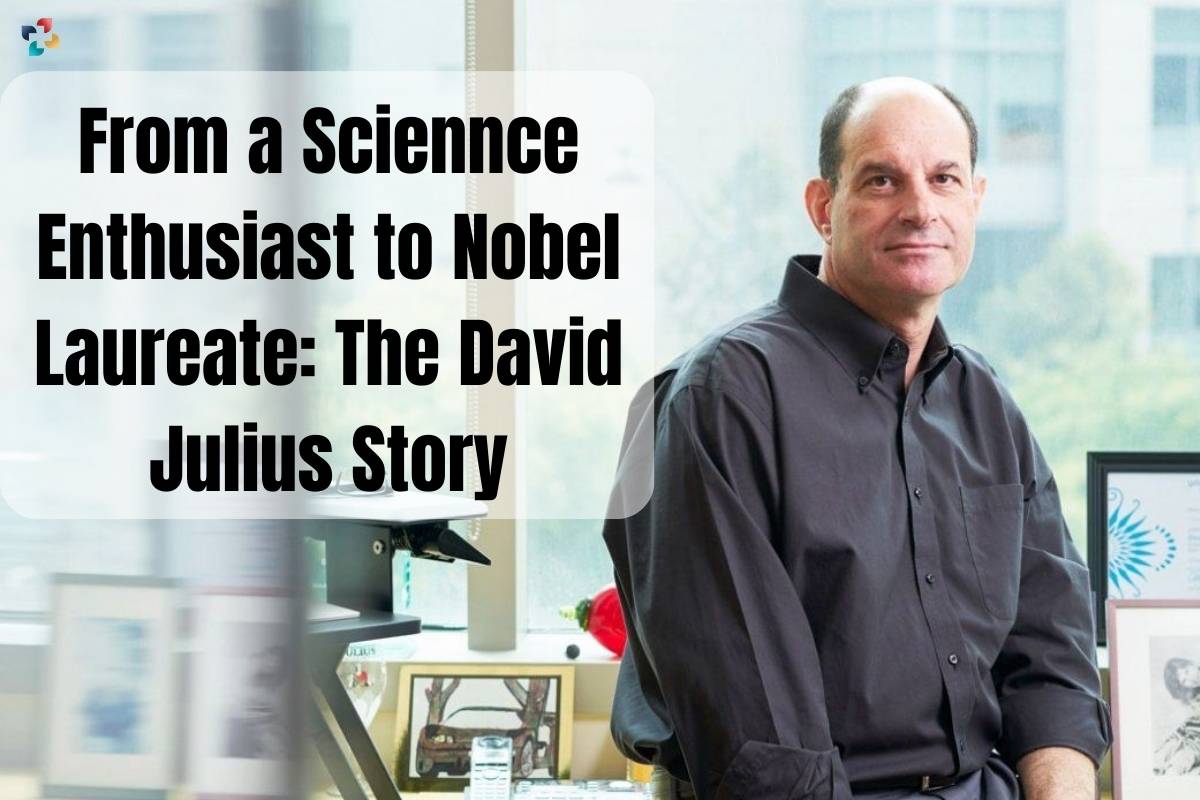Photo by Steve Babuljak
In the vast realm of scientific exploration, some individuals are dedicated to their groundbreaking research to revolutionize the basic understanding of the human body. One such notable scientist is David Julius, a name that resonates within the fields of physiology and pharmacology. His work has opened new frontiers in the comprehension of pain perception and temperature sensation, deciphering the intricate molecular mechanisms that govern these fundamental human experiences.
In this blog, you will experience the captivating journey of David Julius, providing a glimpse into his remarkable contributions to the field. You will explore his pioneering research, his transformative discoveries surrounding TRP channels, and the profound implications of his work for understanding and treating conditions related to pain and temperature dysregulation.
A Glimpse into who is David Julius!
David Julius, PhD. is working as a professor and chairman of the Department of Physiology at UC San Francisco and holds the Morris Herzstein Chair in Molecular Biology and Medicine. David Julius is an American physiologist, known for his discovery of heat- and cold-sensing receptors in the nerve endings of the skin.
Along with his subsequent contributions to the analysis of temperature-sensitive receptor molecules, his elucidation of a receptor known as TRPV1. It explained how the human nervous system senses heat, cold, and pain. His studies of TRPV1 further expedited research into novel strategies for pain treatment. David was awarded for his breakthroughs, the 2021 Nobel Prize in Physiology or Medicine, which he shared with Ardem Patapoutian, a Lebanese-born American molecular biologist and neuroscientist.
How did it start?

David learned life sciences at the Massachusetts Institute of Technology and graduated with a B.S. degree in 1977. Subsequently, he attended the University of California, Berkeley, where he examined various mechanisms underlying the processing and secretion of peptides in yeast. After earning a Ph.D. in biochemistry in 1984, David went to Columbia University. Working as a postdoctoral researcher there, he applied gene cloning technologies and identified various genes belonging to the serotonin receptor family.
Pain Perception Research
After leaving Colombia University in 1989, he joined the faculty at the University of California, San Francisco (UCSF) and finished the post-doctoral training. While studying at Columbia University, David Julius got interested in how psilocybin mushrooms and lysergic acid diethylamide work. Soon, he went into depth and learned how things from nature interact with human receptors.
At UCSF, David took an interest in ion channels and understood the molecular mechanisms concerning the sensation of pain. Capsaicin is the pungent principle responsible for the burning sensation associated with red pepper. It had been recognized as an excitatory, or activating, compound at specific somatosensory neurons.
However, there is no clear idea about the specific receptor which was supposed to bind capsaicin to produce the burning sensation. David covered a receptor in the skin to respond to heat using gene cloning strategies. Thereafter, David Julius isolated the molecule and identified it as an ion channel, which he addressed as TRPV1 (transient receptor potential cation channel subfamily V member 1).
Temperature Sensation Research
David was a part of the discovery of other temperature-sensitive ion channels, the transient receptor potential, or TRP, channel family. It was the first cold-sensing receptor discovered known as TRM8 (transient receptor potential cation channel subfamily M member 8) and included in the TRP channel family.

Along with Chinese-born biophysicist and structural biologist Yifan Cheng, David figured out the structures of TRP channels, notably TRPV1 and TRPA1 (the latter sometimes also called the wasabi receptor) in near-atomic detail with the help of cryogenic electron microscopy. The exploration and characterization of TRP channels empowered the latest discovery of how temperature triggers electrical signaling and sensation in the nervous system.
In 1953, the two flavors of temperature sensing, “cold” and “warm” resolved to be temperature afferent fibers, characterized by discharging sensations at low temperatures and an increase in temperature, respectively. Previously, Hensel and Zotterman described the sharpening intense effects of methanol upon cold receptors. From one of the old observations, the acute application of capsaicin causes extreme level pains and repeats animal insensitiveness to the action of this compound.
Capsaicin indicates depolarization of ventral root neurons from isolated rat spinal cord. The chronic and acute effects of nociception are justified by direct actions on primary sensory neurons. David demonstrated the appearance of mechanosensitive currents present in rat dorsal root ganglion (DRG) cells, pointing to the mere existence of mechanosensitive ion channels held responsible for the sensations of touch.
Awards and Recognition
In addition to winning the Nobel Prize, David has earned the following prices:

- Perl-UNC Neuroscience Prize (2000)
- The Shaw Prize in Life Science and Medicine (2010)
- Dr. Paul Janssen Award for Biomedical Research (2014)
- The Canada Gairdner International Award (2017)
- The Kavli Prize in Neuroscience (2020; shared with Patapoutian)
- The Breakthrough Prize in Life Sciences (2020)
Furthermore, he is a member of the U.S. National Academy of Sciences (elected 2004) and a trustee of the Howard Hughes Medical Institute (elected 2021).
David Julius has made significant contributions to our understanding of TRP channels, particularly their role in pain perception and temperature sensation. His research has helped uncover the molecular mechanisms underlying the function and activation of TRP channels, leading to important insights into sensory physiology and potential therapeutic interventions. We hope you enjoyed reading our article regarding what made David Julius win Noble Prize 2021 in Physiology or Medicine and received valuable insights.
FAQs
- In which field David Julius won the Nobel Prize?
In 2021, David Julius shared the Nobel Prize in Physiology or Medicine with Ardem Patapoutian for their discoveries of receptors for temperature and touch.
- Who first discovered capsaicin?
In 1816, capsaicin was first discovered by Christian Bucholz. Capsaicin is a chili pepper extract consisting of analgesic properties. Its chemical composition was first determined in 1919.
- What are TRP channels?
TRP channels are found in a wide range of tissues and organs throughout the body, including sensory neurons, skin cells, and internal organs. By detecting and responding to specific stimuli, they play a crucial role in sensory perception, pain signaling, temperature regulation, and other physiological processes.
Also Read: The Story of Har Gobind Khorana: First Indian Scientist to Win the Nobel Prize in Medicine








